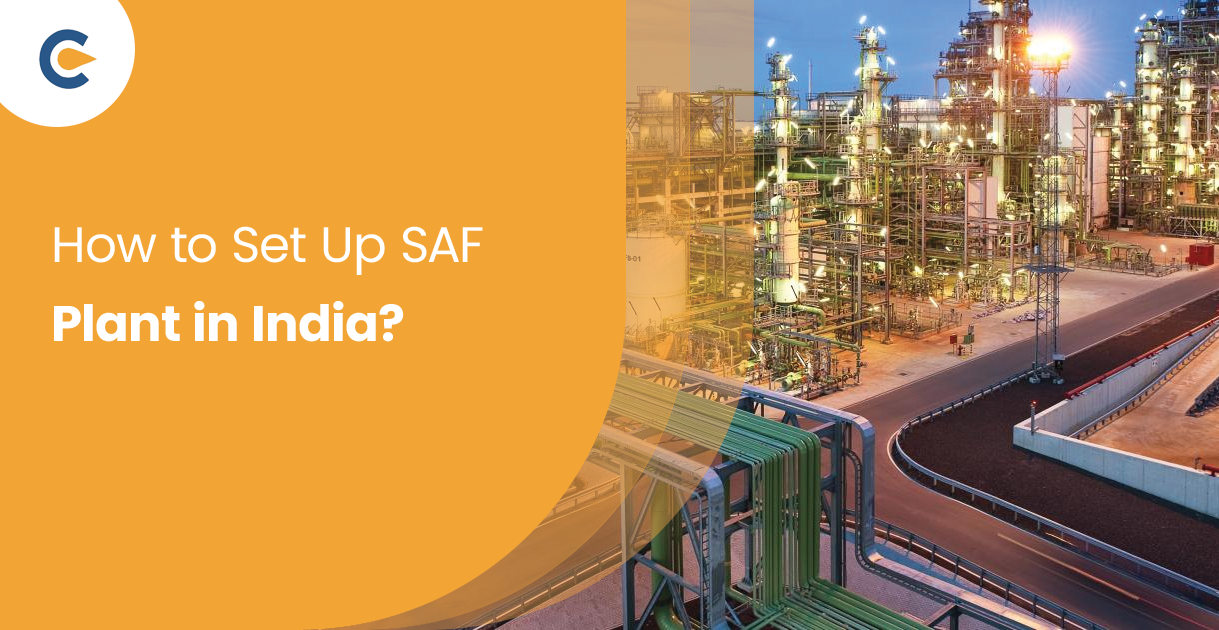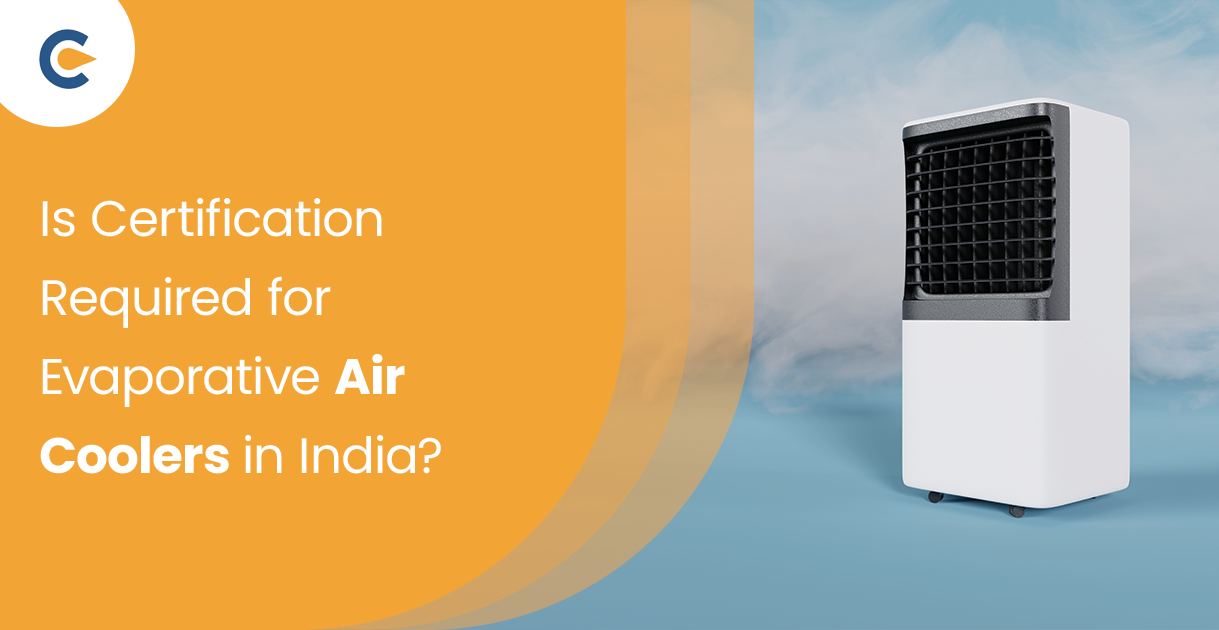India is moving towards renewable energy resources. Leaders in the business and the Indian government have worked hard to produce accurate results. The partnership between GPS Renewables, an Indian biofuel technology business, and SAF One aims to establish sustainable aviation fuel production (SAF plants) in India.
The partners want to use dry plant matter, or lignocellulosic waste feedstock, to develop a 20-30 ml capacity for SAF production in India. The ARYA platform from GPS will be used to create the projects.
We need to work together more to solve the issues related to SAF production as India works towards requiring 1-5% blended utilisation of SAF beginning in 2027. In this post, we will discuss what SAF is and how to Set Up SAF plants in India.
Let’s read it out:
What is SAF?
SAF stands for Sustainable Aviation Fuel. Solid trash, forestry residues, and agricultural waste create it. The SAF production facility uses these bio-waste items as feedstock to manufacture bio-jet fuel.
When it comes to carbon emissions and sustainability, it is safer and more effective than traditional jet fuel. Compared to the standard fuel manufacturing method, the low sulphur content of bio-jet fuel, or SAF, lowers environmental pollution and the carbon footprint associated with using waste materials.
Key Elements of Sustainable Aviation Fuel
India is driving the global aviation industry’s transition from traditional fuel sources to SAF. Sustainable aviation fuel consists of three key elements, that are:
- Sustainability is anything that maintains ecological balance by preventing the depletion of natural resources. It can be continuously and repeatedly resourced consistent with economic, social, and environmental goals.
- It is an aviation fuel that replaces crude oil as the feedstock—the primary material used to make fuels.
Any materials or substances that can be utilised as fuels instead of conventional fossil sources (such as oil, coal, and natural gas) are referred to in this context as non-conventional or advanced fuels. An alternate procedure is also used to turn it into jet fuel. Several different feedstocks for solar-powered air conditioners (SAFs) include cooking oil, plant oils, waste gases, municipal garbage, and agricultural wastes.
- Fuel is jet fuel that satisfies certification and technical standards for use in commercial aircraft. It is “any fuel that has the potential to generate lower carbon emissions than conventional paraffin on a life cycle basis.”
Why SAF is Essential?
The aviation sector is one of the primary sources of carbon dioxide emissions worldwide.
Global aviation travel will have an increasing impact on the environment. The International Council on Clean Transportation projects that by 2050, the amount of carbon dioxide emitted by commercial aeroplanes alone will have tripled.
SAF is essential to the aviation sector’s efforts to comply with environmental regulations, lower its carbon footprint, and slow global warming.
How does SAF Work?
Turning easily obtainable resources into a drop-in substitute for crude oil yields SAF.
Thus far, those materials have consisted of animal fats, used cooking oils, mustard seeds, and soybeans. Soon, SAF will also be produced from sustainable biomass, such as crop waste and forest trimmings.
The end product is a fuel that may be used without requiring modifications to aviation technology and is chemically equivalent to diesel derived from petroleum.
Stepwise Guide to Set up an SAF plant in India
Here are some steps you should follow to establish the SAF plant (Sustainable aviation fuel production company) in India:
- Business Incorporation
Formally incorporate your sustainable aviation fuel (SAF) production company as a separate legal entity to start the process. Select a suitable company structure to protect personal assets and handle the paperwork.
Respect jurisdiction-specific laws and finish the required documentation to register the company under a separate name. You need to get your company registered in India, if you want to set up an SAF Plant in India.
- Land and Infrastructure
Choose and acquire a suitable plot for your SAF production facility, considering elements like closeness to feedstock suppliers and transportation networks.
Create the necessary infrastructure, such as production plants and administrative buildings, while adhering to regional laws about environmental effects and land usage.
- Technology Acquisition
Investigate and acquire the equipment and technologies needed for productive and eco-friendly SAF manufacturing. Work with reliable technology manufacturers or suppliers to ensure the apparatus complies with environmental rules and industry requirements.
- Necessary Permissions
Make your way through the regulatory maze by securing the required licences and consents from the appropriate authorities in charge of SAF manufacturing. This covers licences for various purposes, safety certifications, and environmental permissions.
Maintain tight coordination with local authorities to guarantee adherence to land-use rules, including zoning laws.
Create a thorough risk management strategy and a robust compliance plan to reduce possible environmental, public health, and property rights hazards.
Collaborate with legal and regulatory professionals to guarantee the punctual completion of yearly compliances linked to acquired authorisations. Fulfilling EPR compliance need is also essential.
- Feedstock Sourcing
Contracts should be in place with suppliers for the reliable and sustainable procurement of feedstocks, like waste oils or biomass. Sourcing practices should follow ethical and environmental guidelines, as this will support the SAF production process’s overall sustainability.
- Operationalisation
After all required clearances are obtained and the infrastructure is in place, start commissioning and operationalising the SAF production plant.
Adopt strict operational procedures and quality control techniques to ensure that SAF of the highest calibre is produced.
- Market Entry and Distribution
Create a strategy plan for entering the market, considering government incentives, industry partnerships, and airline agreements.
Provide effective means of distribution and logistics to ensure that the SAF generated complies with safety and transportation laws and is delivered to end customers.
- Continuous Improvement and Innovation
Commit to ongoing development by funding the hunt for novel, environmentally friendly production techniques.
To be at the forefront of SAF production, keep up with industry innovations and change the technology and procedures at your factory accordingly.
Benefits of SAF Plants in Practical Scenario
The usefulness of SAF Plants is beyond all imagination. Some of the significant benefits of SAF Plants are showcased below-
- Minimize Greenhouse Gas Emissions
One of the substantial benefits of using SAF in aircraft is its capacity to cut GHG emissions considerably.
In comparison with fossil fuels, Sustainable aviation fuel has been illustrated in some circumstances to lower total lifecycle CO2 emissions by up to 80%. The advanced techniques and methodologies of SAF production can help in accomplishing net-negative CO2 emissions.
As the aviation segment contributes around 9% to 12% of the nation’s transportation-related GHG emissions, carbon intensity will be on the lower side. It is a crucial way to reduce these GHG emissions.
- Provide Additional Environmental Benefits
Using SAF in aeroplanes provides several extra advantages for the planet’s health and well-being beyond lowering GHG emissions.
SAF can enhance and add value to the quality of Earth’s air and water by minimizing emissions of sulphur oxides (SOx) and nitrogen oxides (NOx), two significant atmospheric pollutants that expose human health and ecosystems to danger, along with CO2 emissions.
The renewable resources that supply sustainable aviation fuel offer the most notable environmental advantages. For instance, inducing sustainable aviation fuel from wet wastes minimizes pollutants in watersheds. Besides this, it prevents dangerous methane gas from marching ahead into the sky.
Moreover, a few other biomass crops that are employed to make sustainable aviation fuel have the potential to reduce the scope for erosion, upgrade biodiversity, boost the flow of water quality and quantity, and store carbon in the soil.
- Support the Rural Farming Communities
Growing biomass crops for use in SAF production can effectively support the economic well-being of rural farming communities.
For example, producers can increase soil quality and minimise nitrogen losses by selling SAF feedstocks to potential buyers during their off-seasons.
Larger-scale SAF feedstock crops, as can other feedstocks like municipal waste, can be grown in some nations on land unsuitable for food crops. The economic merits of SAF manufacturing, which do not compromise local food production capacity as other job choices, can benefit many of these countries.
- Improve Aircraft Performance
While using SAF in aircraft directly benefits the environment, it also improves aircraft performance, which is sometimes neglected.
SAF burns cleaner in engine combustion as it has lower aromatic content. Furthermore, it improves aircraft performance in comparison to conventional jet fuel. Additionally, SAF lessens the number of hazardous substances released locally around airports during take-off and landing.
Challenges in Setting up a SAF Plant
There are numerous challenges in the path of setting up a SAF plant in India. Some of the known challenges in SAF plant setup are mentioned below-
- High Cost to Scale Production
Nowadays, the cost of sustainable aviation fuel is higher than that of conventional jet fuel. The main obstacles to this emerging solution are the high cost of specialised processing needed for biofuels and the need to achieve economies of scale to reduce production costs.
Despite this, the aviation industry anticipates that SAF will become more economically feasible as demand for SAF increases and technology progresses.
- Limited Supply and Manufacturing Constraints
One significant barrier to the development of SAF is access to the fuel itself. SAF is not yet widely produced, distributed, or refuelled; there aren’t many locations, like airports, where physical SAF is available, and fuel shipping could raise greenhouse gas emissions.
Adopting methods like book and claim will be crucial for SAF adoption when actual fuel is unavailable if it is to have the anticipated impact.
- Feedstock Selection and Availability
The SAF currently offered for sale has a minimal variety of feedstocks. This is expected to evolve, and different feedstocks will have varying advantages and disadvantages.
In the coming years, discovering and sourcing suitable feedstocks at scale will be a continuous discussion topic.
- Fuel for the Future
With a fraction of the carbon emissions, sustainable aviation fuel can substitute fossil-based fuels with the same (or comparable) energy outputs and physical properties.
SAF makes up just 0.2% of jet fuel used worldwide today, and because of its restricted supply, it is about three times more expensive than petroleum fuel. Nevertheless, investment in SAF will boost its use and accessibility, which will eventually help to stabilise costs.
To maximise the impact of SAF and attain broad adoption, we must expand production, construct infrastructure, and keep advancing technology. A coordinated effort from all relevant parties, including governments, regulatory agencies, the scientific community, airlines, logistical providers, and individual and business travellers, is needed to make this breakthrough.
SAF is a viable way to lessen aviation’s adverse environmental effects and meet challenging emission reduction targets.
How Much Can SAF Cut Emissions?
SAF is subject to stringent sustainability standards. To be sustainable, it must reduce greenhouse gas emissions from current oil-based jet fuels by at least 50%.
However, studies reveal that it is capable of far more, with reductions of up to 80% compared to conventional jet fuels.
The next generation of sustainable aviation fuels could further achieve CO2 reductions of 85–95%. They would be made from biomass, which comprises algae, crop residues, animal waste, forestry residue, and common trash like product packaging and food leftovers.
Regarding SAF created from biomass, the carbon dioxide these plants take in during their growth period is almost equal to the amount released during fuel combustion. Although the energy required to transport raw materials and refine fuel results in some emissions generated during the SAF production process, this would still make the fuel carbon neutral.
BPCL to Invest 1400 Crore to Establish SAF Facilities
Bharat Petroleum Corporation Limited (BPCL) is all set to invest Rs 1400 crore in order to set up SAF (sustainable aviation fuel) facilities in three of its recognized refineries.
The BPCL ensures that a SAF production facility has the potential to accomplish 5% blending by 2030.
Conclusion
India and other developing nations are entitled to design their aircraft emission reduction plan and timeline that best suits their circumstances. India’s high agricultural output can help it become a global leader in sustainable aviation fuel (SAF) manufacturing.
Instead of creating new aircraft or engines, SAF is a biofuel that can be mixed with regular jet fuel. It has the potential to cut carbon emissions by 80%.
India is emerging as a worldwide pioneer in promoting good change. It aims to improve SAF blending in passenger and commercial aircraft with a planned net zero carbon emission goal by 2070.
Frequently Asked Questions
What is Sustainable Aviation Fuel (SAF)?
SAF is an aviation fuel from renewable resources such as agricultural waste, waste oils, and energy crops. It emits fewer greenhouse gases than traditional jet fuel.
Why is SAF important for the aviation industry?
SAF is essential for lowering the aviation industry's carbon footprint and advancing global climate goals. It helps to enhance air quality and provides a sustainable substitute for jet fuel derived from fossil fuels.
What is SAF made of?
Cooking oil and leftover animal fat are residual raw materials and 100% renewable waste used to create SAF. Our innovative business platforms are centred on the technological and commercial development of novel raw materials that are scalable and sustainable and enable their usage. For instance, we investigate lignocellulosic, algae, municipal solid waste, and Power-to-Liquid fuel, sometimes known as “e-fuels.”
How is SAF used?
In current aeroplanes, SAF is blended with regular jet fuel as a drop-in fuel. Before usage, SAF is mixed with fossil jet fuel to match ASTM jet fuel criteria. It is then made accessible for hoisting into aircraft utilising the airport's current fuel infrastructure.
What are the Environmental Benefits of SAF?
SAF lowers air pollution, minimises the aviation sector's dependency on fossil fuels, and cuts greenhouse gas emissions. By using waste products as feedstock, it also aids in waste management.
Why are SAFs Important for the Economy?
The aviation industry is greatly incentivised to use SAFs for commercial, business, and military aircraft because of the financial savings, employment opportunities, and environmental advantages incentivised. SAF availability is essential for the aviation sector to fulfil its substantial promises to reduce global carbon emissions.
How does SAF contribute to cleaner transport?
SAF contributes to lowering the aviation industry's carbon footprint by reducing its use of fossil fuels, essential for meeting climate change goals and enhancing air quality.
What progress has India made in adopting SAF?
India is moving in the right direction to incorporate SAF into its aviation industry. A combination of SAF and conventional jet fuel is used on flights, SAF usage is encouraged by policy, and domestic production capabilities are investigated.
What are the advantages of SAF over conventional jet fuel?
Compared to conventional jet fuel, SAF can cut carbon emissions from the fuel lifetime by up to 80%. Additionally, it delivers increased fuel economy and can support energy security by diversifying the fuel source.
Have there been any developments in India's use of SAF?
There have been noteworthy advancements, including using a combination of SAF in flight, government programmes to assist SAF manufacturing and research, and possible alliances with foreign organisations.
What is the future outlook for SAF in India?
The future looks bright because both the public and private sectors are demonstrating a solid commitment to increasing the production and usage of SAF. The intention is to integrate SAF with worldwide environmental goals and make it a regular and viable airline fuel choice.
Read our article: EPR Certification For Electronic Manufacturers










